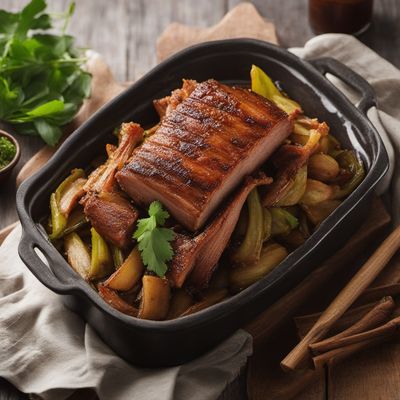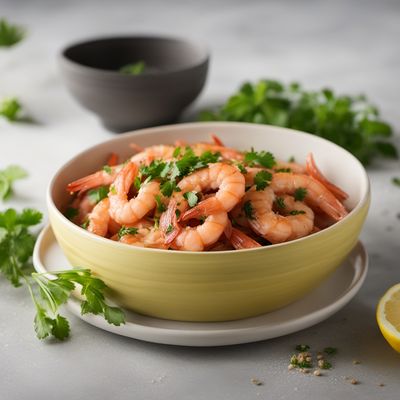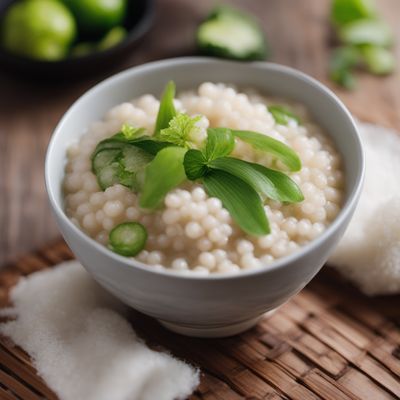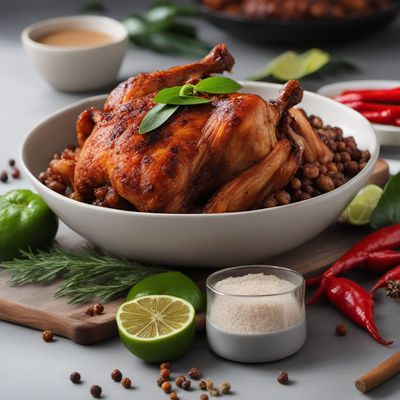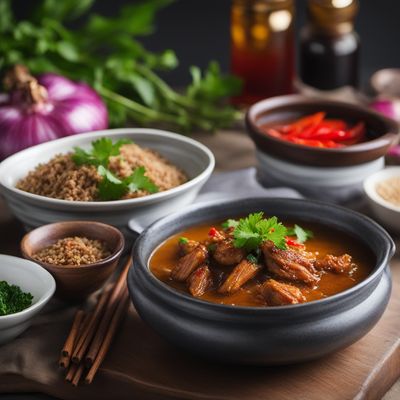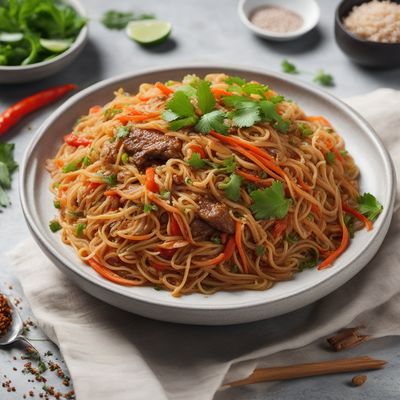
Recipe
Chinese Islamic Butsi
Savory Chinese Islamic Butsi: A Fusion of Flavors
4.2 out of 5
This recipe combines the traditional Filipino dish Butsi with the unique flavors of Chinese Islamic cuisine. The result is a delicious and aromatic pastry that is perfect for any occasion.
Metadata
Preparation time
30 minutes
Cooking time
20 minutes
Total time
50 minutes
Yields
4 servings
Preparation difficulty
Medium
Suitable for
Halal, Dairy-free, Nut-free, Egg-free, Soy-free
Allergens
Wheat
Not suitable for
Vegetarian, Vegan, Gluten-free, Paleo, Keto
Ingredients
Chinese Islamic Butsi differs from the original Filipino Butsi in terms of the spices and flavor profile. While the original Butsi is typically seasoned with Filipino spices such as soy sauce and vinegar, the Chinese Islamic version incorporates a unique blend of spices commonly used in Chinese Islamic cuisine. This includes cumin, coriander, and turmeric, which give the dish a distinct and aromatic flavor. We alse have the original recipe for Butsi, so you can check it out.
-
2 cups (250g) all-purpose flour 2 cups (250g) all-purpose flour
-
1/2 teaspoon salt 1/2 teaspoon salt
-
1/2 cup (120ml) water 1/2 cup (120ml) water
-
1 tablespoon vegetable oil 1 tablespoon vegetable oil
-
1/2 pound (225g) ground beef 1/2 pound (225g) ground beef
-
1 small onion, finely chopped 1 small onion, finely chopped
-
2 cloves garlic, minced 2 cloves garlic, minced
-
1 teaspoon cumin powder 1 teaspoon cumin powder
-
1 teaspoon coriander powder 1 teaspoon coriander powder
-
1/2 teaspoon turmeric powder 1/2 teaspoon turmeric powder
-
Salt and pepper to taste Salt and pepper to taste
-
Vegetable oil for frying Vegetable oil for frying
Nutrition
- Calories (kcal / KJ): 350 kcal / 1465 KJ
- Fat (total, saturated): 15g, 5g
- Carbohydrates (total, sugars): 40g, 2g
- Protein: 15g
- Fiber: 2g
- Salt: 1g
Preparation
-
1.In a large mixing bowl, combine the all-purpose flour and salt. Gradually add water and vegetable oil, mixing until a dough forms. Knead the dough for about 5 minutes until smooth and elastic. Cover with a damp cloth and let it rest for 30 minutes.
-
2.In a skillet, heat a tablespoon of vegetable oil over medium heat. Add the ground beef and cook until browned. Add the chopped onion and minced garlic, and sauté until fragrant.
-
3.Stir in the cumin powder, coriander powder, turmeric powder, salt, and pepper. Cook for an additional 2 minutes, allowing the flavors to meld together. Remove from heat and let the filling cool.
-
4.Divide the dough into small portions and roll each portion into a thin circle. Place a spoonful of the filling in the center of each circle and fold the dough over to enclose the filling. Pinch the edges to seal.
-
5.Heat vegetable oil in a deep pan or skillet over medium heat. Fry the filled pastries until golden brown on both sides. Remove from the oil and drain on paper towels.
-
6.Serve the Chinese Islamic Butsi warm and enjoy!
Treat your ingredients with care...
- Ground beef — Make sure to use lean ground beef for a healthier option. You can also substitute it with ground chicken or turkey if desired.
Tips & Tricks
- For a spicier version, add a pinch of chili powder or red pepper flakes to the filling.
- Serve the Chinese Islamic Butsi with a side of chili sauce or soy sauce for dipping.
- Make a larger batch and freeze the uncooked pastries for future use. Just thaw and fry when needed.
- Experiment with different fillings such as chicken, lamb, or vegetables to suit your taste preferences.
- To achieve a flakier pastry, brush the rolled dough with melted butter before folding and sealing.
Serving advice
Chinese Islamic Butsi is best served warm as an appetizer or snack. Arrange the pastries on a platter and garnish with fresh herbs such as cilantro or parsley for an added touch of freshness.
Presentation advice
To enhance the presentation, dust the Chinese Islamic Butsi with a sprinkle of cumin powder or sesame seeds before serving. Serve them on a decorative plate or a traditional Chinese Islamic serving dish to showcase the cultural fusion.
More recipes...
For Filipino cuisine » Browse all
For Chinese Islamic cuisine » Browse all
More Filipino cuisine dishes » Browse all

Adobong pugita
Octopus adobo
Adobong pugita is a traditional Filipino dish that is made with octopus, vinegar, and soy sauce. This flavorful dish is perfect for seafood lovers...

Bukayo
Bukayo is a traditional Filipino sweet that is made with coconut and sugar. The dish is easy to make and is a popular snack in the Philippines.

Bilo-bilo
Sweet glutinous rice balls in coconut milk
Bilo-bilo is a traditional Filipino dessert that is made with glutinous rice flour and coconut milk. It is a sweet and chewy dessert that is...

